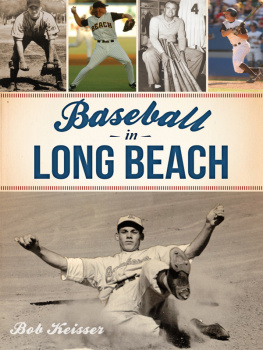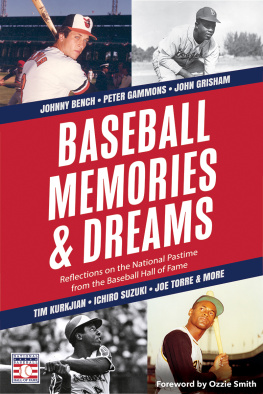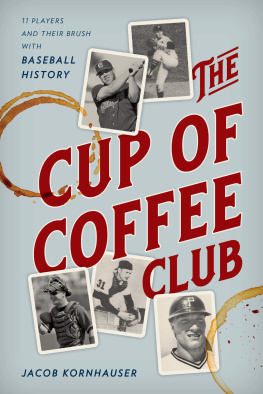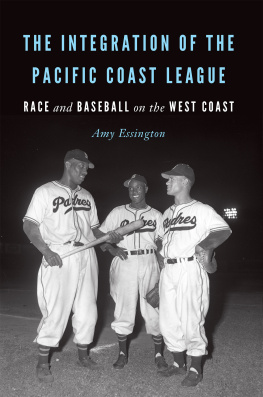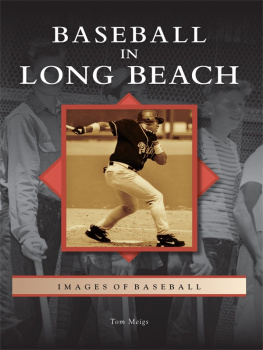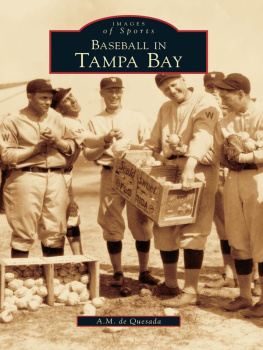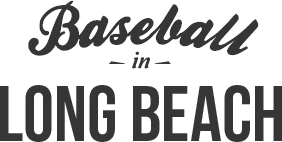

Published by The History Press
Charleston, SC 29403
www.historypress.net
Copyright 2013 by Bob Keisser
All rights reserved
Unless otherwise noted, all images appear courtesy of the Press-Telegram archives.
First published 2013
e-book edition 2013
Manufactured in the United States
ISBN 978.1.62584.066.0
Library of Congress CIP data applied for.
print edition ISBN 978.1.60949.996.9
Notice: The information in this book is true and complete to the best of our knowledge. It is offered without guarantee on the part of the author or The History Press. The author and The History Press disclaim all liability in connection with the use of this book.
All rights reserved. No part of this book may be reproduced or transmitted in any form whatsoever without prior written permission from the publisher except in the case of brief quotations embodied in critical articles and reviews.
CONTENTS
INTRODUCTION AND ACKNOWLEDGEMENTS
Theres nothing easy about writing a book, but it certainly helps to have access to a centurys worth of history.
Like every sportswriter, I thought about writing books long before getting around to it. The idea of doing one on Long Beachs storied baseball history began in the mid-2000s, when former Poly star Tony Gwynn was closing in on three thousand hits and a short time later the Hall of Fame, and in 2008 when Blair Field celebrated its fiftieth anniversary.
I spent sixteen years at the Los Angeles Herald-Examiner and was there when the newspaper closed. Nine months later, Long Beach Press-Telegram sports editor Jim McCormack hired me in 1990. He told me Id come to respect Long Beachs history, but I had no idea then how much it would impact me.
The Press-Telegram has been covering the local baseball scene since before Recreation Park opened in 1924. Frank T. Blair was the former sports editor who kept the embers of building a stadium here warm for three decades. I realized the true scope of baseball here when I started seriously researching the book and got so caught up in plowing through stories, anecdotes and clips that I didnt start the writing part early enough.
Hopefully, readers will be as fascinated as I am about the early days of baseball in Long Beach and the many people who made their mark as Major Leaguers, local legends, coaches, scouts and Dirtbags.
The final chapter of the book is a registry of area players at nine high schoolsthe seven in the Moore League and two Catholic schoolsand Long Beach State and Long Beach City College. There are two additional parts of the registry noting those who reached the majors from greater Long Beach schoolsGahr, Norwalk, Los Alamitos and Cerritos College among othersas well as Major Leaguers who were born in the area but didnt play prep or college ball at area schools. If I had one goal, it was to mention as many people as possible, and at least on that count, I think I cleared the fence.
Thanking the people who contributed to this book could be a book by itself. Im indebted to Tony Gwynn, Bobby Grich, Harry Minor, Dave Snow, John Herbold, the late Duke Snider and two dozen others for their time. The people who helped me make a career in newspapers are all Major Leaguers, tooJoe Dojcsak, Nick Beck, Bud Furillo, Allan Malamud, Rick Arthur, Jim McCormack, Jim Buzinski and my colleague for an amazing thirty-eight years, Doug Krikorian. It would not have been possible without access to past stories by two dozen Press-Telegram writers and columnistsfrom Krikorian, the lead columnist for more than two decades; to Billy Witz, one of the P-Ts most prolific writers; and to Gordie Verrell, who covered the Dirtbags as comprehensively as he did the Dodgers. I also want to thank former executive editor Rich Archbold for the courtesy of the P-T photo library. It also could not have been done without the support of my magnificent son Chris Keisser, who gets a save for always providing support and enthusiasm.
Chapter 1
A PARK, A FIELD, A LEGACY
Long Beach had a helluva year in 1924.
By years end, the population of Long Beach had increased by more than 15 percent from the previous twelve months thanks to the oil boom in Signal Hill. A bond issue of $3.5 million was approved to dredge the outer harbor to create the Long Beach Port.
The city council approved building its own municipal gas plant. The Long Beach Central Bank was organized. Building flourished, with the opening or construction of the Egyptian Theatre on Fourth Street, the Bank of Italy on Third Street, the Press-Telegram building on Pine Avenue and the Heartwell Building.
Joe Josts opened its doors on Anaheim Street as a restaurant and then added a barbershop, pool tables and a poker parlor. Haircuts and eight-ball eventually gave way to its current status as dispenser of beer, community and goodwill.
And in 1924, four baseball fields at Recreation Park were proposed, authorized and completed, Long Beachs own Fields of Dreams.
It isnt an overstatement to say the Red Parks impact has been as prolific as anything in Long Beach. How many baseball games have been played at Rec and its successor, Blair Field, since 1924? One hundred thousand? How many young men and women in Southern California with a baseball dream stepped on the field at Park and Tenth? One million?
If you ask the men who have been around Long Beach baseball for any significant part of the last ninety years, they will claim that every young man in Southern California between the ages of fourteen and twenty-two who played high school, American Legion, Connie Mack or collegiate baseball have played a game at Rec Park (19241957) or Blair Field (19582013).

Blair Field.
Those original baseball fields were built to accommodate baseball and softball, and the main field at the Northwest corner had its own one-thousand-seat shell of a grandstand. Baseball was just one part of Rec Park. It also included a golf course that became known as duffers paradise in its early years; it is now Recreation Golf Course, which has eighteen- and nine-hole courses and is considered the busiest golf course in the nation.
Tall oaks and eucalyptus trees were planted on the facility, supplementing those already on the land, and they now surround and shroud the park like emissaries. Now theres Recs successor, Blair Field, the Joe Rodgers softball stadium, the Billie Jean King Tennis Center and a lawn bowling facility.
But the baseball fields were always the hub of the facility. A well-worn hub. They were used so often that the infield grass on all four fields was shredded within five years, leading the city to remove what was left of the grass and turn all four fields into dirt infields.
There was a lot of good baseball played at Recreation Park, Harry Minor, a Wilson High grad and professional player, coach, manager and scout, Long Beachs all-in-one icon, said. There wasnt a single ball player in Long Beach who didnt play at Rec Park. We had plenty of ball fields in town, but Rec Park was the signature park. If you loved baseball, its where you wanted to play.
The common touch was the kids, but professionals came to town to use Rec Park as well. The park officially opened on March 14, 1924, with a game between the Pacific Coast League (PCL) Los Angeles Angels and Major League Chicago Cubs, both owned by William Wrigley. The Angels briefly made Rec Park their spring training home that year.
Next page
